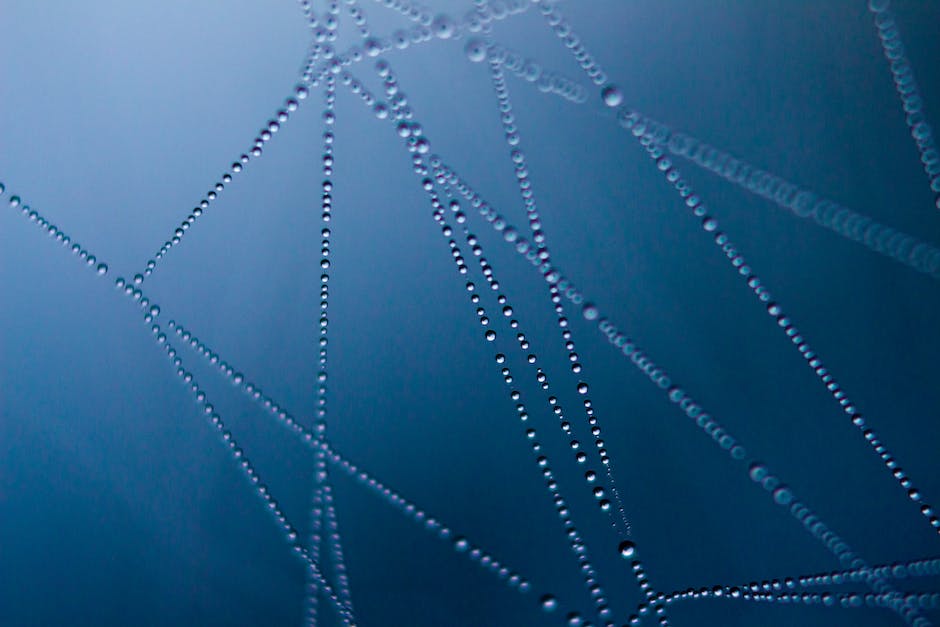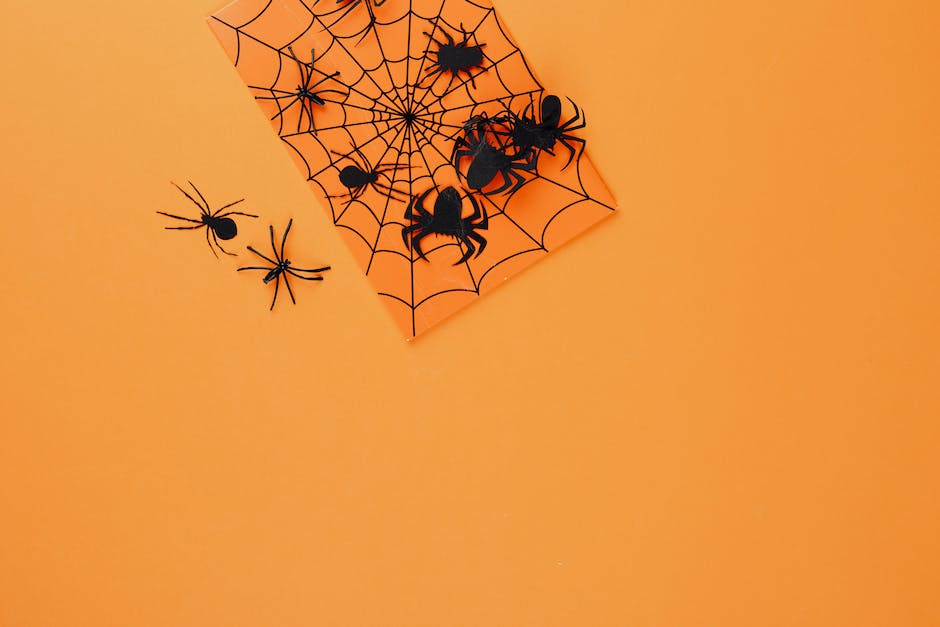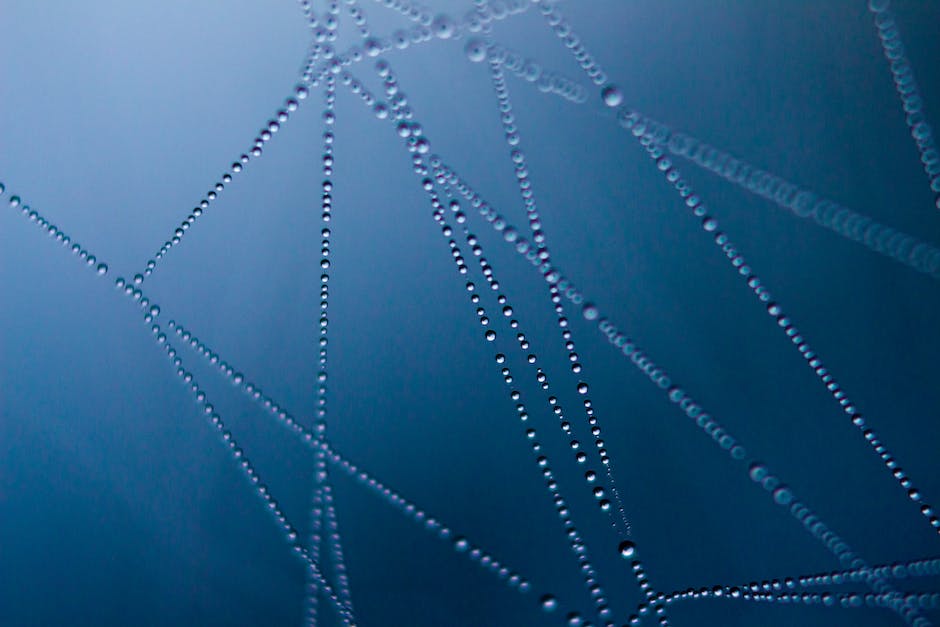Most spiders produce silk to make their webs, which they use to trap insects or other small animals for food. The silk is produced by special glands on the spider’s abdomen. The spider can control the flow of silk from these glands, and can produce different types of silk for different purposes. The silk is extruded through tiny pores on the tips of the spider’s legs.
The process of how a spider makes a web has been studied for centuries and there are
many different types of webs. The most common type of web is the spiral web. The spider
goes to the center of the web and emits a silk thread. The silk hardens when it hits the air
and the spider then walks along the thread to the outside of the web. The spider constantly
releases more silk as it goes until it has made a complete circle. Then the spider goes back
to the center of the web and begins to build the next layer of the spiral, making the web
stronger and thicker.
Can a spider run out of web?
Yes, spiders do run out of web! It can happen if a spider has a large, aggressive insect trapped in its web. The spider has to literally choose whether to keep trying to subdue it’s ‘prey’ – or – cut it loose.
Spider webs are amazing feats of engineering, and it is incredible that spiders can build them in just 30 to 60 minutes! Even though they are extremely strong, spider webs are often damaged by the elements and don’t last very long. It is a testament to the spider’s skill that they can keep building new webs, despite the challenges they face.
How do spiders build webs across gaps
Spiders produce a very light and floaty piece of silk from their spinneretts and just wave it out in the breeze. The wind will carry it away and if it actually sticks on to something a bit further away it can start building its web.
The silk that a spider produces consists of proteins that are produced in the ampullate gland. When a spider wants to produce silk, it quickly converts these proteins into a solid fibre. Most spiders have multiple ampullate glands, each of which produces a single fibre.
Why do spiders run at you?
Many spiders will react defensively when they feel threatened or disturbed. This can include rearing up, lunging, or biting in self-defense. While these behaviors may be intended to scare off predators, they can also be directed at humans who get too close or disturb them. It is important to be aware of these potential reactions and to avoid handling or disturbing spiders unnecessarily.
If you want to reduce the number of spiders in your home, one of the best things you can do is remove any spider webs that you see. This is especially effective if the webs have egg sacs attached, as each sac can contain up to 400 eggs. By removing the webs, you’ll prevent those eggs from hatching and further reducing the spider population in your home.
How come spiders never run out of web?
It was recently discovered that spiders have glands on their feet that produce silk. Scientists believe that these glands are adapted from former legs, and that the silk glands on the spider’s abdomen are also adapted from former legs. This discovery provides new insight into the evolution of spiders and their ability to produce silk.
The house spider has a lifespan of several years. Females live longer than males, for around 30 months, whilst males only live for about 18. The life pattern between the two genders is markedly different, with females living significantly longer than males. This may be due to the fact that females are better able to take care of themselves and their eggs, whilst males are more likely to be eaten by predators.
Why do spiders take down their webs
Different species of orb-web-spinners have different methods of recycling the amino acids that make up the silk proteins. Some orb-web-spinners ingest the silk as they systematically dismantle their damaged webs. Other species simply discard the old silk. One American species uses old silk to wrap its egg sac.
While Daddy-Longlegs spiders are indeed poisonous, their fangs are far too short to penetrate human skin. So while they may be creepy-looking, they pose no real threat to us!
Why do spiders spin when touched?
Whirling is a behavior exhibited by some spiders when they feel threatened. It is thought to be a way of confusing predators, as it makes it difficult to distinguish between the spider’s head and its legs.
Spiders have the same basic bodily systems as people, but they don’t work in the same way and they’re arranged differently in the body.
The cephalothorax contains the brain, stomach, eyes and mouth, and the abdomen contains the heart, digestive tract, reproductive organs and lungs. However, spiders have a very different anatomy to humans which means that their bodily systems function differently.
For example, spiders have multiple hearts which pump blood through their bodies in a different way to humans. They also have a different digestive system which breaks down their food in a different way. Additionally, spiders breathe in a different way to humans, using a process called ‘book lungs’.
Despite these differences, spiders still have many of the same basic bodily systems as humans which allow them to survive and thrive in their environment.
Is it OK to leave a spider in your room
Spiders are an important part of our indoor ecosystem and rarely a danger to humans. it’s best to just leave them alone.
Spiders are essential to our ecosystem. They are our friends, not our enemies, so we need to find a way to learn to live alongside them. They really are more scared of you than you are of them and would much rather run away. Even the big spiders such as tarantulas don’t want to hurt you.
Can spiders be scared to death?
Scientists have found that even when a predator is not present, the mere hint of one can be enough to cause spiders to stop eating, lose weight, and eventually die. This is known as “predator avoidance response” and it is another example of how animals can be negatively impacted by the mere presence of predators.
If a spider is unfortunate enough to lose a leg, then provided it still has at least one more moult left in its life cycle it’s able to grow a new leg. In most species the new leg is thinner and shorter than the original leg. It can take two or three moults until the regenerated limb matches the original in appearance.
Do spiders get sad when their webs are destroyed
Despite their small size, spiders are capable of building impressive webs. However, it is unlikely that they experience the same emotional response to the destruction of their webs as we would. This is likely due to the difference in the size and complexity of their brains.
If you see a wolf spider in your home, experts say it is best to capture it and release it outdoors. If you must kill it, they warn that you should not simply squish it as this may not be enough to kill all of the spider’s young. They advise that you use a product designed specifically to kill insects.
Conclusion
The web of a spider is made up of a material that the spider produces called spider silk. The spider silk is a protein liquid that hardens when it comes into contact with air. The spider produces the silk in spinnerets that are located on the underside of its abdomen. The spider uses its legs to hold onto the surface that it is going to build its web on. The spider then moves its abdomen in a circular motion and the silk is forced out of the spinnerets. The spider silk hardens and the web is complete.
The process of a spider making a web is an incredibly fascinating one. It begins with the spider spinning out a silk thread from its abdomen. Once the spider has a good length of thread, it then starts to build the frame of the web. Once the frame is complete, the spider begins to fill in the web with a spiral of silk. The process is complete when the web is coated with a sticky substance that helps the spider catch its prey.

